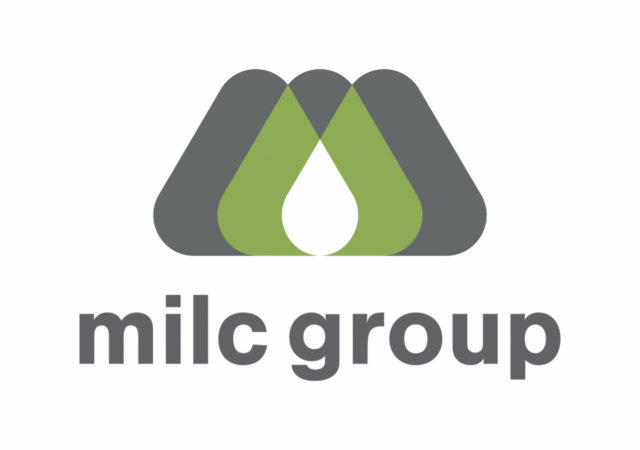A decline in cow numbers was offset by stronger milk output per cow, pushing August 2018 milk production up 1.4 compared to a year earlier. However, cow numbers were up from July 2018, reversing course from last month’s 9,000-cow drop.
August 2017-18 recap at a glance
Reviewing the USDA estimates for August 2018 compared to August 2017:
- U.S. milk production: 18.3 billion pounds, up 1.4 percent
- U.S. cow numbers: 9.4 million, down 4,000 head
- U.S. average milk per cow per month: 1,946 pounds, up 27 pounds
- 23-state milk production: 17.25 billion pounds, up 1.4 percent
- 23-state cow numbers: 8.738 million, down 3,000 head
- 23-state average milk per cow per month: 1,974 pounds, up 28 pounds
Source: USDA Milk Production report, Sept. 19, 2018
• Cow numbers: At 9.4 million head, U.S. cow numbers were down 4,000 head from a year earlier, but up 5,000 from July 2018. Cow numbers in the 23 major dairy states were down about 3,000 head from a year ago, but 4,000 more than July 2018 (Table 1). As of late August, U.S. dairy cull cow slaughter was running about 87,000 head more than the same period a year ago.

Dairy producers in nine of the major states had more cows than a year ago, led by Texas (+20,000 head), Colorado (+14,000) and Kansas (+8,000). Producers in 13 states had fewer cows than a year earlier, led by California (-12,000 head), Ohio (-7,000), and Pennsylvania and Minnesota (each -6,000 head).
• Milk per cow: With producers putting an emphasis on cow comfort and most areas seeing more moderate weather conditions compared to a month earlier, August’s monthly milk production per cow was up 27 pounds nationally compared to a year earlier (Table 2). August 2018 per-cow production was up 105 pounds in Texas and 60 pounds in Kansas, offsetting 30- and 50-pound declines in Illinois and Florida, respectively.

• Milk production: On a percentage basis, greatest year-over-year milk production growth was again centered in three states: Texas output was up 9.5 percent, with Colorado and Kansas each up 8.6 percent. In contrast, eight major dairy states saw year-over-year declines, led by Florida (-7.3 percent) and Virginia (-5.7 percent).
With cow numbers up 20,000 head and milk per cow up more than 3 pounds per day, Texas also led all states for milk production growth on a volume basis in August, up 95 million pounds compared to a year earlier. The growth in Texas outpaced California (+38 million pounds) and Wisconsin (+36 million pounds) combined. Colorado increased production by 31 million pounds, and Kansas was up 25 million pounds. On the other hand, Pennsylvania production declined 24 million pounds from a year earlier, due to lower cow numbers and less milk per cow.
USDA outlook
The USDA’s September World Ag Supply and Demand Estimates (WASDE) report reduced the 2018 milk production forecast by another 100 million pounds, but raised the 2019 forecast by an equal amount.
Citing slightly lower milk cow numbers and a slower rate of growth in milk per cow in the third quarter, the USDA’s 2018 milk production estimate now stands at 217.8 billion pounds. That would be up just 1.1 percent from 2017’s production total of 215.5 billion pounds.
For 2019, the USDA bumped its September milk production forecast to 221 billion pounds, about 100 million pounds more than August’s forecast, based on the expectation of slightly higher cow inventories. If realized, it would be up about 1.4 percent from the level forecast for 2018.
Cropp-Stephenson outlook
In their monthly podcast, Mark Stephenson, director of dairy policy analysis at the University of Wisconsin – Madison, and Bob Cropp, dairy economics professor emeritus, reviewed the milk production estimate and its impact on the markets. After July’s revised estimate of a modest 0.5 percent year-over-year growth in milk production, the dairy economists expect the August numbers to be bearish for prices.
Near term, milk prices will be supported by seasonal cheese sales and strong whey prices, but the ongoing trade war with China threatens whey prices going forward.
The report dampened Cropp’s previous price outlook, although the Class III milk price could still settle in the low $16 per hundredweight range for the final quarter of 2018, he said. Prices should be better in 2019, but to what extent will depend on milk production and exports.
Price changes would likely be measured in dimes and quarters. “We aren’t talking about dollars,” Stephenson said. “There’s no compelling story in the U.S. or the rest of the world that we’re going to have a big movements in prices, either up or down.”
With milk prices range-bound for a fourth straight year, Stephenson wondered aloud whether the dairy industry is in a “new normal” for prices.
Through July, milk production among major exporting countries was up about 1 percent, with the U.S. under that trend. The European Union has seen a drawdown in intervention stocks of milk powder, which may be keeping global milk prices lower.
Stephenson expects a smaller Margin Protection Program for Dairy (MPP-Dairy) payment for September and suggests it may be the final payment for 2018. While margins will improve, it won’t likely come from better milk prices, but rather declining feed costs. ![]()

-
Dave Natzke
- Editor
- Progressive Dairyman
- Email Dave Natzke






